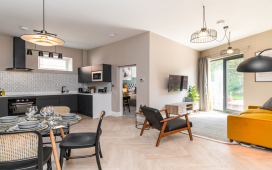The layout of your Amazon storefront can be crucial in differentiating your brand in the competitive Amazon marketplace, where millions of sellers compete for customers’ attention. Sales can be greatly impacted by a well-designed storefront since it not only improves client experience but also company identification. In order to accomplish this, sellers frequently use professional Amazon product listing services and design Amazon storefront services to make sure their listings and storefront are optimised for maximum impact.
#1: Strategic branding
Making sure the design complements your business identity is the first and most important step in creating an Amazon storefront. Using recognisable fonts, colour schemes, and logos that are consistent with your brand’s personality and values is part of this. A strong brand presence makes for a memorable shopping experience and helps gain the trust of potential customers.
#2: Impactful visuals
The core of storefront design is visuals. Eye-catching designs, captivating videos, and high-quality photos may attract and hold customers’ attention at your store. Displaying product photos that emphasise the qualities and advantages of your products is crucial. Furthermore, consumers may be less likely to hesitate to buy if lifestyle photos that depict products in use help them picture them in their own lives.
#3: Organised layout
Navigating your Amazon storefront requires a well-structured layout. Customers can easily locate what they’re looking for thanks to the products’ logical and clear classification. Bestsellers, new arrivals, and featured product categories should all be clearly displayed to draw in customers as soon as they approach the store. In addition to improving the shopping experience, this product arrangement promotes more orders.
#4: Compelling content
Your storefront should have more than just product descriptions. Crafting content that conveys a story about your business and products can be helped by using Amazon’s product listing services. Detailed product details, advantages, and even product comparisons can be included in this. A+ content can be used to incorporate richer media formats like comparison charts, FAQs, and high-definition videos that provide more depth to product listings.
#5: Mobile optimisation
Making sure your storefront is mobile-friendly is essential because more and more customers are shopping on Amazon using mobile devices. This implies that touch features should be readily available and that all layouts, navigational components, and images should work effectively on smaller screens. In addition to enhancing the user experience, mobile optimisation helps increase mobile users’ conversion rates.
#6: Effective use of promotions
Promotions are an effective way to draw in and win over prospective customers. Sales volumes can rise if promotions are thoughtfully incorporated into your storefront design. These could be limited-time promotions, package discounts, or special discounts for customers that visit your store. The success of your sales approach can be significantly impacted by how noticeable and appealing these promotions are.
#7: Search engine optimisation (SEO)
SEO should be your first focus if you want to increase your storefront’s visibility. This involves including appropriate keywords that prospective buyers may use to look for products similar to yours in your product listings and storefront content. SEO supports your paid advertising efforts by bringing in organic traffic to your storefront.
#8: Regular updates
The market is ever-changing, and customer tastes can shift quickly. You can maintain your brand’s relevance and engagement by routinely upgrading your storefront to reflect new product launches, seasonal themes, or emerging trends. This also gives you a chance to update your SEO campaigns and advertise new or underperforming items to increase their exposure.
#9: Tracking and analytics
Finally, sellers should monitor the performance of their storefront using Amazon’s analytics tools in order to genuinely optimise impact. The design of storefronts and product listings can be improved and optimised by examining statistics on traffic, conversion rates, and customer behaviour patterns.
In summary, creating a successful Amazon storefront requires a trifecta of ongoing optimisation, interesting content, and strategic approach. By implementing these tactics and collaborating with skilled Amazon product listing services and storefront designers, sellers can produce a memorable, powerful shopping experience that not only draws customers but also boosts revenue and fosters enduring brand loyalty.







